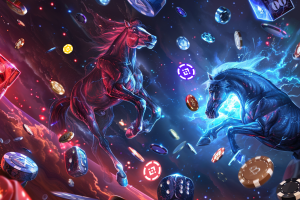
Over the last couple of years, the concept of tokenization has garnered an increasing amount of traction globally, especially for its potential to revamp how physical and traditional financial (trad-fi) assets are accessed, exchanged, and managed. In brief, the process of real-world asset (RWA) tokenization entails the representation of any asset as a token on the blockchain.
This innovative approach offers numerous benefits, including increased liquidity, faster settlement times, reduced costs, and enhanced risk management. Moreover, by lowering these barriers to entry, opportunities for a broader range of investors to access RWAs more efficiently and securely can open up.
From a numbers standpoint, the potential market size for tokenized assets is quite staggering, with projections from Big 4 consulting giant BCG suggesting it could reach $16 trillion by 2030 — equalling 10% of the global gross domestic product (GDP). To put it another way, this growth represents more than a 50,000% increase from its 2022 valuation of $310 billion.
Lastly, by tokenizing assets such as real estate, art, bonds, stocks, ETFs, and government securities, it is not only possible to enhance liquidity but also improve transparency and efficiency in transactions, making investments in RWAs particularly attractive for those seeking stable returns with lower risk profiles.
The data is undeniable
Since 2022, a large number of major financial entities have continued to venture into the tokenization sector. For instance, banking behemoth UBS recently announced that it was working with Singapore’s central bank to bring various RWAs onto the blockchain.
Similarly, JPMorgan revealed that it had successfully processed multiple transactions via its Tokenized Collateral Network (TCN) with BlackRock — the largest asset manager in the world — thus reflecting a broader trend of integrating traditional assets with blockchain tech. Following the landmark development, BlackRock CEO Larry Fink was recently quoted as saying: “The next generation for markets, the next generation for securities, will be tokenization of securities.”
Within the crypto realm, MANTRA, a fully compliant and regulatory-friendly multi-asset platform bridging the Trad-Fi and DeFi worlds, has gained prominence as a key player in the tokenized RWA space. The platform’s focus on these assets in a regulatorily compliant manner, alongside its native L1 blockchain development, has marked significant milestones in its journey.
Most recently, MANTRA launched its public testnet and introduced its yield-bearing investment products (MANTRA Vaults) in an effort to meet the growing demand for secure, compliant DeFi products. Additionally, the platform recently underwent a DAO vote to make $OM the primary L1 token for the MANTRA Chain, with the proposal passing with overwhelming support. The move not only demonstrated the community’s general enthusiasm surrounding the project but also aligned with MANTRA’s vision of building a sustainable ecosystem that benefits both users and developers.
Another project worth mentioning in this regard is Blocksquare. With a vision to democratize real estate investments, the platform enables businesses of any size to digitize properties all over the globe. Moreover, Blocksquare allows for the launch of investment platforms while directly connecting people to tokenized real estate deals virtually.
Through its tokenization protocol and white-label marketplace, Blocksquare allows entrepreneurs to digitize real estate assets at reduced costs and with greater efficiency. Most recently, Blocksquare expanded its footprint with Oceanpoint.fi — an open-ended DAO for tokenized real estate assets — allowing property owners to list their apartments, homes, shops, etc, across different decentralized financial markets without the need for any middlemen.
Financially speaking, the impact of tokenization on real estate, the world’s largest asset class valued at $613 trillion, has been significant, with the on-chain value of real estate tokens growing by 102% in just the first three quarters of 2023 alone.

Real Estate RWA growth since 2021 (source: Galaxy research)
Looking ahead
As more and more people continue to harness the power of the blockchain, experts like Prof. Jason Potts, director of the Blockchain Innovation Hub at RMIT, believe that by consolidating tokenized assets on a single, public ledger and facilitating market transactions with a reduced trust cost — governed by rules embedded within and enforced by the blockchain itself — it is possible to drive a significant shift towards what he describes as “programmable commerce.”
Moreover, Prof. Potts believes that tokenization introduces a new way of conducting digital trades, where the capital itself becomes computable, unlocking unprecedented efficiencies and possibilities in the economic landscape. Thus, it will be interesting to see how this yet nascent sector continues to evolve and grow, especially with many companies projecting this market to become worth trillions of dollars in the near to mid-term.
























